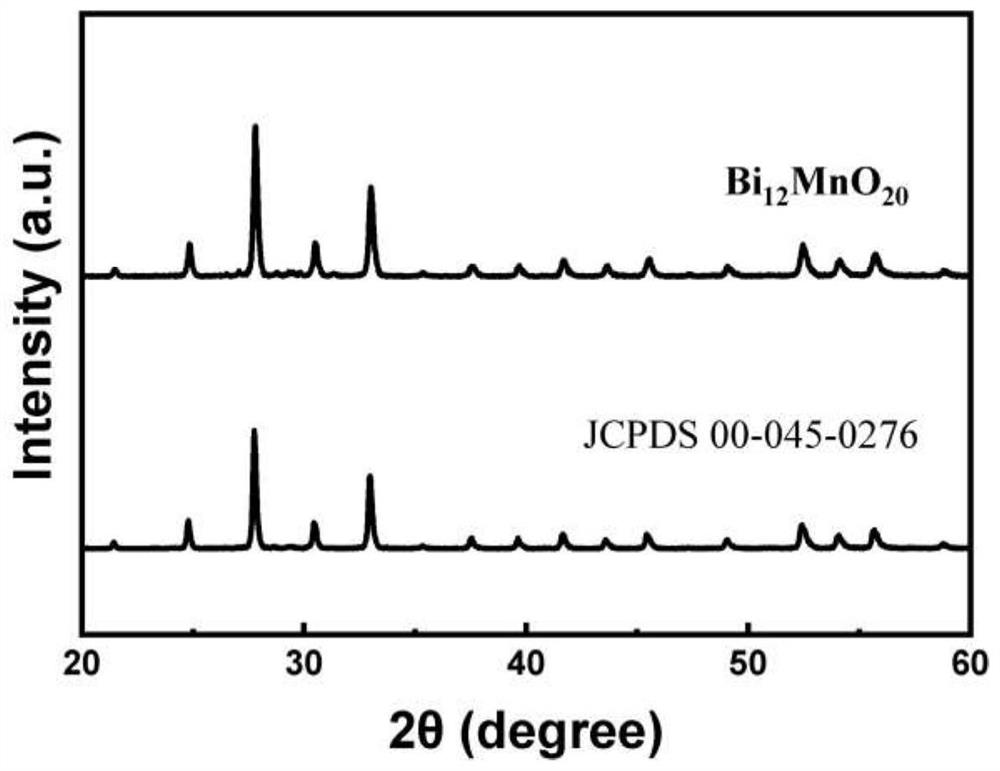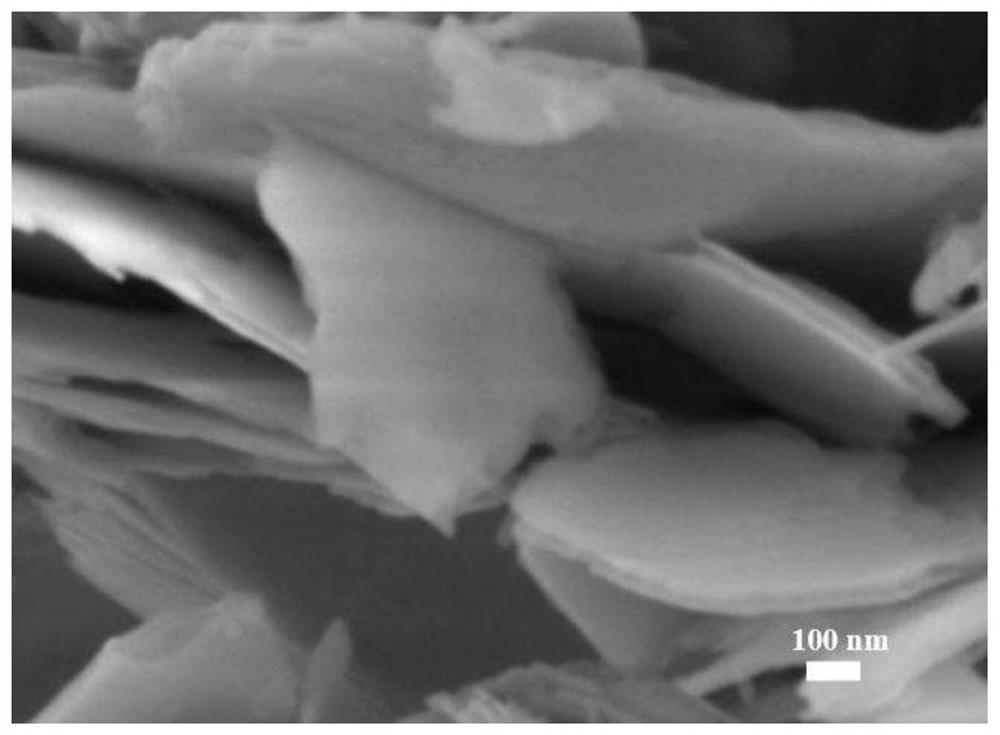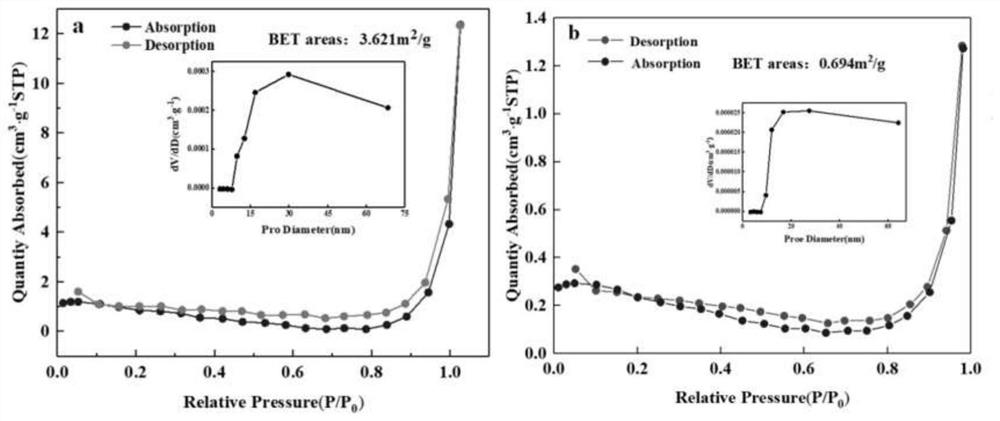Manganese-doped sillenite photocatalyst, preparation method thereof and application of manganese-doped sillenite photocatalyst in synchronous degradation of hexavalent chromium and organic pollutants
A technology of organic pollutants and photocatalysts, applied in the field of photocatalytic materials, can solve the problem of reducing the recombination rate of photogenerated electron-hole pairs, which has not yet been seen, to improve the photocatalytic reduction efficiency, high sunlight utilization efficiency, and realize The effect of full spectral response
- Summary
- Abstract
- Description
- Claims
- Application Information
AI Technical Summary
Problems solved by technology
Method used
Image
Examples
Embodiment 1
[0052] The embodiment of the present invention provides a kind of manganese-doped soft bismuth ore Bi 12 MnO 20 The preparation method of photocatalyst specifically comprises the following steps:
[0053] (1) Take 6 mmol of bismuth trioxide, dissolve it in 40 ml of hydrochloric acid with a mass fraction of 38%, and control its pH to 1.8 ± 0.2, and keep stirring at room temperature for 40 min to obtain a transparent and clear solution;
[0054] (2) Adding 1mmol manganese chloride tetrahydrate to the transparent clear solution, adding 20ml concentration while stirring at room temperature is a sodium hydroxide solution of 1mol / L, and continuing to stir for 30 minutes to obtain a suspension with a pH of 11.5;
[0055] (3) Transfer the suspension to a flask with a condensing reflux device, heat and stir in an oil bath at 120°C for 6 hours, then filter and wash with deionized water for 3 times to obtain a precipitate;
[0056] (4) The precipitate was dried in an oven at 100° C. fo...
Embodiment 2
[0058] The embodiment of the present invention provides a kind of manganese-doped soft bismuth ore Bi 12 MnO 20 The preparation method of photocatalyst specifically comprises the following steps:
[0059] (1) Take 6 mmol of bismuth chloride, dissolve it in 25 ml of hydrochloric acid with a mass fraction of 38%, and control its pH to 1.8 ± 0.2, and continue stirring at room temperature for 45 min to obtain a transparent and clear solution;
[0060] (2) Add 0.5mmol manganese chloride tetrahydrate to the transparent clear solution, add 10.0ml concentration of sodium hydroxide solution that is 1mol / L while stirring at room temperature, continue to stir for 30 minutes to obtain a suspension that has a pH of 10.8 ;
[0061] (3) Transfer the suspension to a flask with a condensing reflux device, heat and stir in an oil bath at 125°C for 5.5 hours, then filter and wash with deionized water for 3 times to obtain a precipitate;
[0062] (4) The precipitate was dried in an oven at 100...
PUM
| Property | Measurement | Unit |
|---|---|---|
| Concentration | aaaaa | aaaaa |
| Thickness | aaaaa | aaaaa |
Abstract
Description
Claims
Application Information
 Login to view more
Login to view more - R&D Engineer
- R&D Manager
- IP Professional
- Industry Leading Data Capabilities
- Powerful AI technology
- Patent DNA Extraction
Browse by: Latest US Patents, China's latest patents, Technical Efficacy Thesaurus, Application Domain, Technology Topic.
© 2024 PatSnap. All rights reserved.Legal|Privacy policy|Modern Slavery Act Transparency Statement|Sitemap



